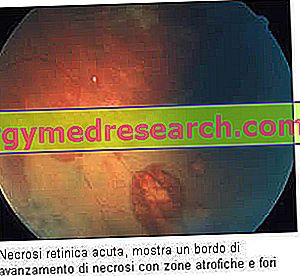
What is Zoledronic Acid Accord and what is it used for?
Zoledronic acid Accord is a medicine that contains the active substance zoledronic acid . It is used to prevent bone complications in adults with advanced bone cancer, including fractures (bone breaks), vertebral compressions (when the spinal cord is compressed by the bone), bone disorders that need radiotherapy (radiation treatment) or surgery and hypercalcaemia (high levels of calcium in the blood). Zoledronic acid Accord can also be used to treat hypercalcaemia caused by tumors. Zoledronic Acid Accord is a "generic medicine". This means that Zoledronic Acid Accord is similar to a 'reference medicine' already authorized in the European Union (EU) called Zometa. For more information on generic medicines, see the questions and answers by clicking here.
How is Zoledronic Acid Accord used?
Zoledronic acid Accord can only be obtained with a prescription and should only be prescribed and administered by a healthcare professional experienced in the use of this type of medicine with intravenous administration. The medicine is available as a concentrate (4mg / 5ml) for the preparation of a solution for infusion (drip) into a vein. The normal dose of Zoledronic Acid Accord is an infusion of 4 mg over the course of at least 15 minutes. When used to prevent bone complications, the infusion can be repeated every three weeks and patients must also take calcium and vitamin D supplements. A lower dose is recommended for patients with bone metastases (when the tumor has spread to the bone) if suffering from renal function reduced in mild to moderate form. It is not recommended in patients with severely reduced kidney function.
How does Zoledronic Acid Accord work?
The active ingredient in Zoledronic Acid Accord, zoledronic acid, is a bisphosphonate that blocks the action of osteoclasts, the body's cells that contribute to the breakdown of bone tissue, thereby reducing bone loss. This reduction helps make the bones less prone to breakage, with an advantage in terms of preventing fractures in cancer patients with bone metastases. Patients with tumors may have high levels of calcium in the blood, which is released from the bones. By inhibiting the breakdown of bones, Zoledronic Acid Accord also helps to reduce the levels of calcium released into the blood.
What studies have been performed on Zoledronic Acid Accord?
The company presented data on zoledronic acid taken from the scientific literature. No further studies were needed as Zoledronic acid Accord is a generic medicine given by infusion and containing the same active substance as the reference medicine, Zometa
What is the risk associated with Zoledronic Acid Accord?
Since Zoledronic acid Accord is given by infusion and contains the same active substance as the reference medicine, its benefits and risks are assumed to be the same as the reference medicines.
Why has Zoledronic Acid Accord been approved?
The Agency's Committee for Medicinal Products for Human Use (CHMP) concluded that, in accordance with EU requirements, Zoledronic Acid Accord has been shown to have comparable quality and to be comparable to Zometa. Therefore, the CHMP considered that, as in the case of Zometa, the benefits outweigh the identified risks and recommended to approve the use of Zoledronic Acid Accord in the EU.
What measures are being taken to ensure the safe and effective use of Zoledronic Acid Accord?
A risk management plan has been developed to ensure that Zoledronic Acid Accord is used as safely as possible. Based on this plan, safety information has been included in the summary of product characteristics and the package leaflet for Zoledronic Acid Accord, including the appropriate precautions to be followed by healthcare professionals and patients.
More information on Zoledronic Acid Accord
On 16 January 2014, the European Commission issued a marketing authorization for Zoledronic Acid Accord, valid throughout the European Union. For more information about treatment with Zoledronic Acid Accord, read the package leaflet (also part of the EPAR) or contact your doctor or pharmacist. The full EPAR for the reference medicine can also be found on the Agency's website. Last update of this summary: 01-2014.



